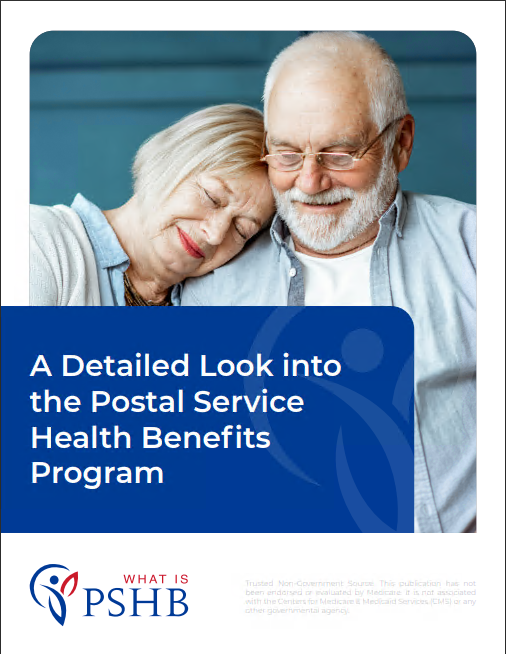Medicare Simplified for Postal Service Employees
Medicare is a vital component of healthcare for millions of Americans, including postal service employees and retirees. However, navigating the complexities of Medicare can be daunting. In this article, we’ll simplify Medicare for postal service employees, covering everything from eligibility and enrollment to coverage options and key considerations. By breaking down the essential components of Medicare, postal service employees can make informed decisions about their healthcare coverage in retirement.
Understanding Medicare Basics
Medicare Part A:
Medicare Part A covers hospital stays, skilled nursing facility care, hospice care, and some home health services. Most individuals do not pay a premium for Medicare Part A if they or their spouse paid Medicare taxes while working.
Medicare Part B:
Medicare Part B covers medical services such as doctor visits, outpatient care, preventive services, and durable medical equipment. Beneficiaries typically pay a monthly premium for Medicare Part B.
Medicare Part C:
Medicare Part C, also known as Medicare Advantage, offers an alternative to traditional Medicare. Private insurance companies approved by Medicare offer these plans and provide all benefits under Part A and Part B, often with additional benefits like prescription drug coverage and wellness programs.
Medicare Part D:
Medicare Part D provides prescription drug coverage, helping beneficiaries afford the cost of their medications. Private insurance companies offer part D plans and may vary in terms of premiums, formularies, and coverage options.
Medicare Eligibility for Postal Service Employees
Age-Based Eligibility:
Most postal service employees become eligible for Medicare at age 65, regardless of their employment status or enrollment in other health insurance programs. To avoid late enrollment penalties, individuals should enroll in Medicare during their Initial Enrollment Period (IEP).
Disability-Based Eligibility:
Postal service employees under the age of 65 may be eligible for Medicare if they have been receiving Social Security Disability Insurance (SSDI) benefits or certain Railroad Retirement Board (RRB) disability benefits for at least 24 months.
Enrollment in Medicare
Initial Enrollment Period (IEP):
The Initial Enrollment Period for Medicare begins three months before an individual’s 65th birthday and ends three months after. This is the ideal time for postal service employees to enroll in Medicare to avoid any gaps in coverage.
General Enrollment Period (GEP):
If individuals miss their Initial Enrollment Period, they can enroll in Medicare during the General Enrollment Period, which runs from January 1 to March 31 each year. However, late enrollment penalties may apply.
Special Enrollment Periods (SEP):
Certain circumstances, such as delaying retirement or losing employer-sponsored coverage, may qualify individuals for a Special Enrollment Period outside of the Initial Enrollment Period or General Enrollment Period.
Choosing the Right Medicare Coverage
Postal service employees can choose between Original Medicare (Part A and Part B) and Medicare Advantage (Part C). Understanding the differences between these options, including costs, coverage, provider networks, and additional benefits, can help employees make the right choice for their healthcare needs.
Prescription Drug Coverage:
When selecting Medicare coverage, postal service employees should consider their prescription drug needs and whether to enroll in a standalone Medicare Part D plan or choose a Medicare Advantage plan that includes prescription drug coverage.
Key Considerations for Postal Service Employees
Coordination with PSHB:
Postal service employees eligible for both Medicare and the Postal Service Health Benefits (PSHB) program should understand how benefits are coordinated between the two programs to maximize coverage and minimize out-of-pocket expenses.
Retirement Planning:
As postal service employees approach retirement age, understanding how Medicare fits into their overall retirement plan is essential. Considering healthcare costs, coverage options, and enrollment timelines can help employees prepare for a smooth transition into retirement.
Conclusion
Medicare is crucial in providing healthcare coverage for postal service employees and retirees. By understanding the basics of Medicare, eligibility requirements, enrollment periods, coverage options, and key considerations, postal service employees can confidently navigate their healthcare options and ensure comprehensive retirement coverage.
Ready to learn more about Medicare and how it applies to postal service employees? Explore our resources and discover how to maximize your healthcare benefits in retirement.
Stay tuned for more informative content on retirement planning and healthcare options for postal service employees.
Featured Articles
Licensed agents are available to help you find the best Medicare plan for you.
Working with a licensed agent can simplify your PSHB & Medicare experience.
Feedback For What Is PSHB
Let us know what you think!








